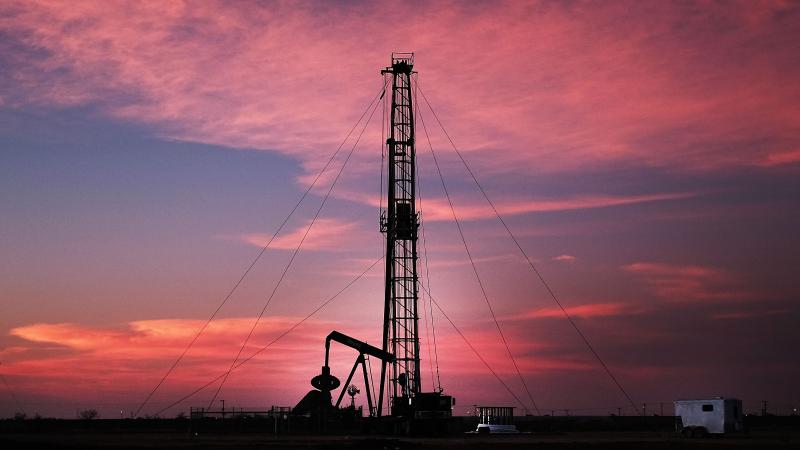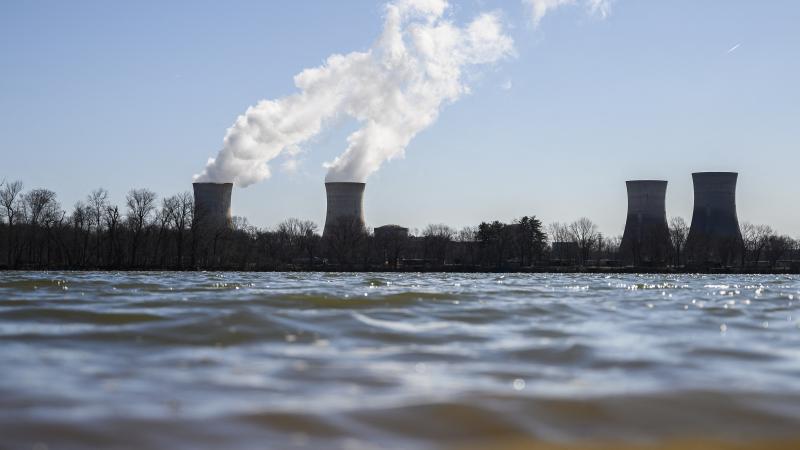Power grid watchdog warns of future blackouts, need for natural gas to support renewables
As the U.S. shuts down coal-fired power plants and increasingly relies on natural gas-fired generators, NERC warns, the potential for electricity shortfalls across the nation is being amplified.
The watchdog overseeing the North American power grid warns that the combination of rapid retirement of coal-fired electricity generation and the increasing reliance on wind and solar are risking large swaths of the United States with blackouts during heat waves and cold snaps.
“This assessment provides clear evidence of growing resource adequacy concerns over the next 10 years,” the latest report states. The North American Electric Reliability Corporation (NERC) produces annual long-term assessments of potential electricity shortfalls over the next decade. In its latest long-term assessment published Wednesday, NERC stated that a priority action to ensure more grid reliability is increasing natural gas supply infrastructure.
For the past few years, NERC’s long-term assessments have reported increasing risks of electricity shortfalls during periods of high demand as a result of increased weather-dependent generation from wind and solar, as well as increasing demands for power stemming from electric vehicles, data centers, and home electrification.
Natural gas reliance
Kevin Kilty, a retired mechanical engineer, told Just The news that grid assessment organizations, like NERC and similar state-level organizations, tend to be careful with the language they use in their reports. “They use euphemisms that are sort of soft sounding, and they don't want to upset the political types. The political types are noisy and aggressive,” Kilty said.
Whereas previous years' assessments talked about the need for dispatchable power, they avoided specifics. This year’s assessment was the first to prioritize fossil fuel infrastructure to address the growing problem.
In sub-freezing temperatures, the report explained, the natural gas supply to generators is disrupted as people use more gas to heat their homes. The problem is amplified from the changing mix of dispatchable resources, which are generators that don’t have to rely on random weather conditions to produce power, such as coal, natural gas, and nuclear.
As the U.S. shuts down coal-fired power plants and increasingly relies on natural gas-fired generators, NERC warns, the potential for electricity shortfalls is being amplified. The U.S. grid has never been as reliant on natural gas generation as it is today, wind and solar resources are not adequate to meet demand. “Periods of low wind are another example of potentially energy-constrained conditions if the resource mix is not sufficiently balanced with dispatchable resources to prevent electricity shortfalls,” the report states.
“The past two winters have seen interruptions of natural gas delivery to generators that resulted in energy deficiencies,” the report says.
NERC “strongly” recommends reliability rules for natural gas infrastructure that ensures a reliable supply of the fuel during extreme cold. The report also recommends that state regulators and utility organizations extend the service of generators that are planned for retirement.
The report also recommends increasing transmission capacity. Because the wind blows and sun shines randomly across the country, large numbers of new transmission lines are needed to transport energy from where it’s produced to where it’s consumed.
The challenge for this transmission buildout, the report notes, are the siting and permitting challenges that delay the projects. Because the lines cross multiple jurisdictions with their own requirements, and in some cases private land with owners who don’t want the lines crossing their property, the projects can take years to get approvals.
Kilty said that the report’s findings are similar to what’s happening with integrated resource planning documents, which utilities produce. They lay out resource planning in the long term, usually a couple of decades. Kilty said in the past few years, they’re identifying the same issues.
“They know that there are all kinds of problems coming unless they can figure out a way to solve them. And that's what this document looks like. It looks like they are now recognizing those problems, and they're trying to give everybody a warning,” Kilty said.
Kilty added that with the growing reliance on natural gas, it’s similar to the 1970s energy crisis, which led to long lines at the gas station. In that case, the U.S. was heavily dependent on imports from OPEC for its energy. “One of the things we learned in the 1970s was not to discriminate against energy sources,” Kilty said. So, coal use grew rapidly beginning in the 1980s, before it started to decline after 2008.
“Now we're back to discriminating against energy sources again, and putting way too much burden on natural gas,” Kilty said. Kilty added that while the report recommends more natural gas infrastructure, pipelines face fierce opposition from the Biden administration.
Specific regions
The report divides the United States into more than a dozen areas based on the generation sources available to the region.
The area with the highest risk is the Midcontinent Independent System Operator (MISO), which includes all or parts of Montana, North Dakota, South Dakota, Minnesota, Iowa, Wisconsin, Michigan, Indiana, Illinois, Missouri, Kentucky, Arkansas, Mississippi, Louisiana, and Texas.
Beginning in 2028, those areas are projected to have a 4.7 gigawatt shortfall assuming planned retirements of generation capacity from coal and nuclear go forward.
The northern area of MISO will add more than seven gigawatts of natural gas generation, while retiring over five gigawatts of coal generation, by 2033. Nearly four gigawatts of solar projects are expected to come online in that time.
The central area of the region, which includes all of Tennessee and portions of Georgia, Alabama, Mississippi, Missouri, and Kentucky, also faces risks during the summer months when air conditioners are increasing demand on the grid.
For New England, the report says there are risks of blackouts from cold spells or a series of cold spells, largely as a result of increased demand from green electrification initiatives and electric vehicle adoption. Electrification of the transportation and heating sectors are primary drivers of the increase in demand forecast, and the planned wind and solar generation resources, the report explains, won’t provide the dispatchable power needed to meet demand.
In the latest report, New York City has been added to the areas of high risk. The city will, according to the report, face shortfalls beginning in 2025, as a result of state laws aimed at reducing nitrogen oxide emissions. These laws will shut down natural gas- and coal-fired power plants. “Largely in response to public policies, fossil fuel generators are retiring at a faster pace than new renewable supply is entering service,” the report states.
The situation in the western half of the U.S. also remains at elevated risk, but still in better shape than the central part of the country. The Southwest Power Pool is seeing margins between supply and demand shrinking, and its surplus capacity is falling “sharply,” according to the report.
That area includes Kansas and Oklahoma, as well as portions of New Mexico, Texas, Arkansas, Louisiana, Missouri, South Dakota, North Dakota, Montana, Minnesota, Iowa, Wyoming, and Nebraska. The Texas grid, according to the assessment, continues to have issues during hot summer evenings, as well as the rare but dangerous cold snaps.
“Extreme winter weather, such as Winter Storm Uri in February 2021, remains a serious concern that warrants continued efforts to ensure that generators and fuel supplies are available and capable of performing in severe conditions,” NERC said. Texas continues to add large amounts of solar power to its grid, but the intermittency of the resource only elevates risks of blackouts, the report explains.
This year, NERC began producing seasonal assessments, which focus on near-term resource adequacy. The 2023/2024 Winter Assessment had similar findings as the long-term assessment, as did the 2023 Summer Assessment.














